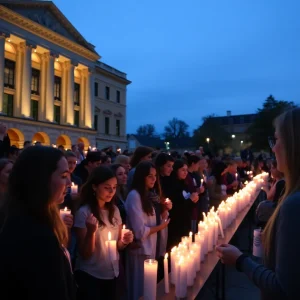Birmingham School District Adapts to Growing Hispanic Population
Birmingham, Ala. – The Birmingham City Schools (BCS) district is making strides to support the increasing number of Hispanic students as highlighted in their new strategic plan. With the Hispanic-Latino population in the metro area seeing a *marked rise* from 3% to 11% since the pandemic began, the district is expanding resources to enhance educational outcomes for these students.
Focus on Language Support
Superintendent Dr. Mark Sullivan addressed the changes, emphasizing that “most of the students we’re receiving speak Spanish as their native language at home.” To cater to this growing demographic, BCS has increased the number of English as a Second Language (ESL) teachers and hired more bilingual aides within the schools. These efforts are complemented by *advances in technology*, such as the inclusion of a language line, allowing students to access interpreters when needed.
Introduction of Empowerment Academy
In addition to enhancing language support, BCS has launched an “Empowerment Academy” at Carver High School and Putnam Middle School. This initiative targets older students lacking a formal educational background, providing them with the resources necessary to succeed. As Dr. Sullivan put it, “What we saw before was that many students dropped out of school once they reached the age where they were allowed to do so. We want to ensure that we provide our students with the resources they need to be successful in high school, so they can also succeed beyond high school.”
Community Support and Future Outlook
The strategic plan has the backing of candidates within the community, including Carlos Aleman, CEO of the Hispanic Immigrant Center of Alabama. Aleman stressed the importance of promptly assisting students in learning English and adapting to their new environment. “I think the more resources we have to help them quickly learn English and adapt to their new environment, the better outcomes we’ll see for both the students and the schools,” he noted. His sentiment reflects the growing situation in Alabama, where 12% of K-12 students are now identified as Hispanic.
Projecting Future Trends
As the Hispanic population continues to grow, Aleman predicts that some high schools in Birmingham could see as much as 50-60% of their student body being Hispanic in the coming years. “This indicates that in 10-15 years, some high schools may have a third of their student body be Latino-Hispanic,” he noted. Dr. Sullivan added that many of the recent arrivals are primarily from Central America, which aligns with the increase in students requiring additional support services.
Conclusion
The Birmingham City Schools district is taking proactive measures to address the needs of its expanding Hispanic student population. By increasing language support and introducing programs like the Empowerment Academy, BCS aims to create a more inclusive learning environment for all students. As Birmingham continues to evolve, these efforts highlight a commitment to educational equity and support.

























